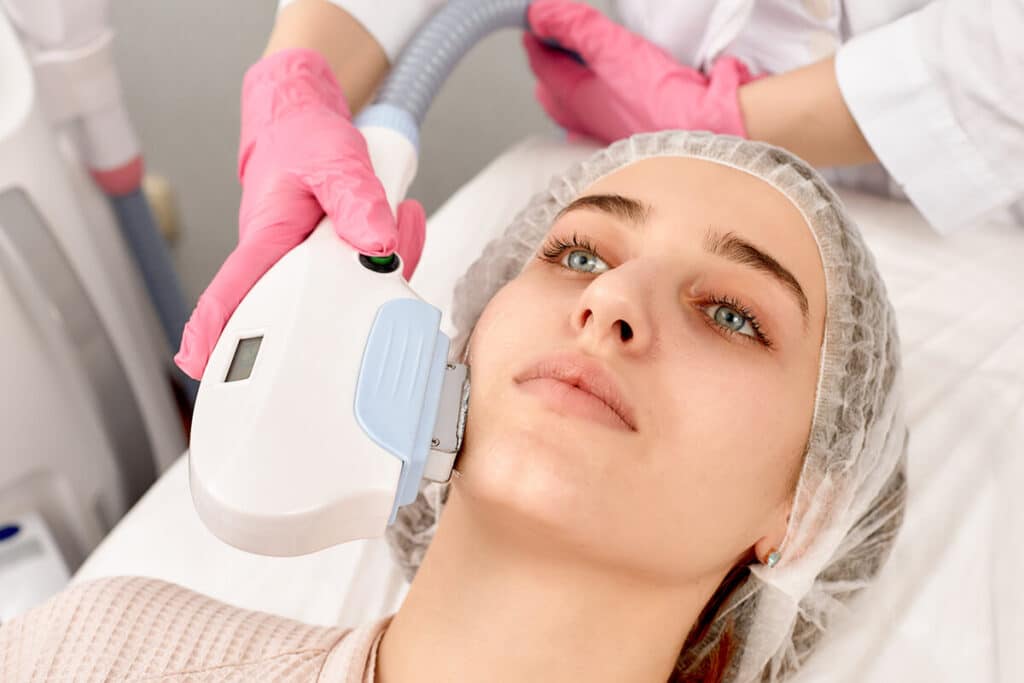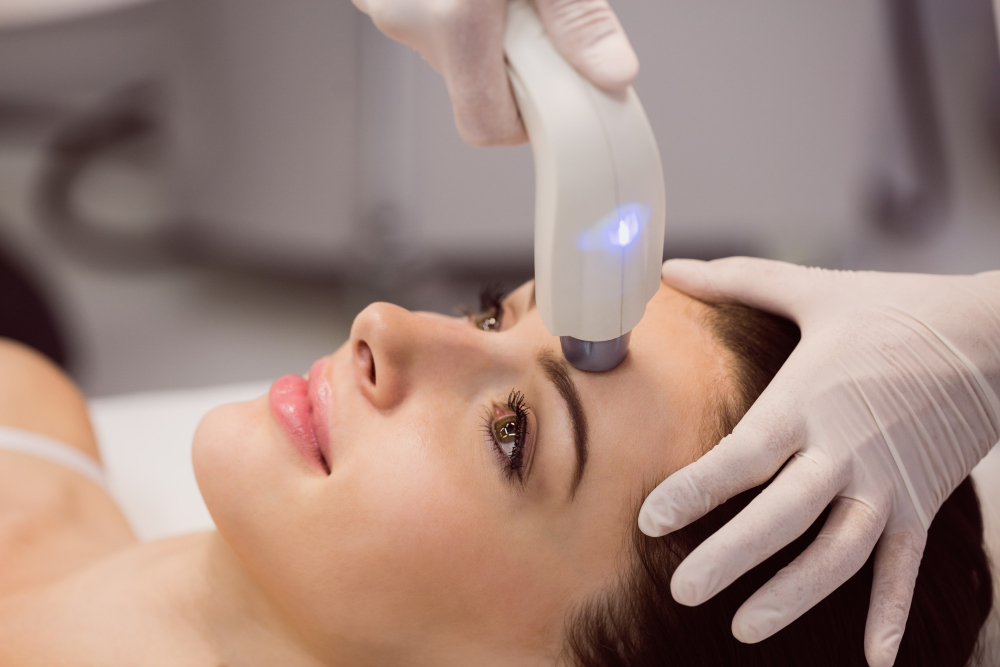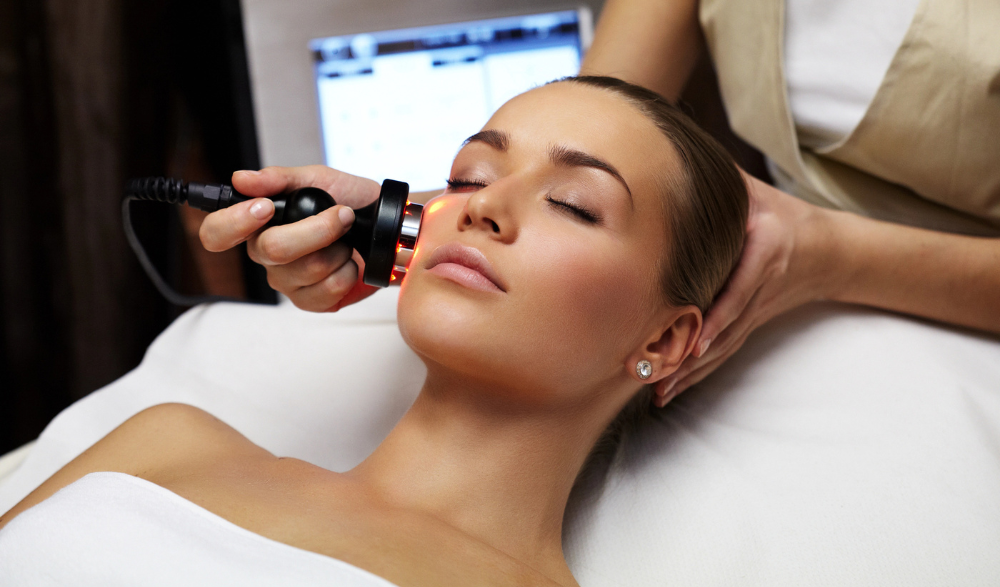
Laser Skincare Treatments and Peeling Skin
In the ever-evolving world of skincare, lasers have emerged as a revolutionary solution for those seeking smoother, clearer, and more youthful skin. From treating acne scars to reducing pigmentation and promoting collagen production, laser technology offers a wide array of benefits. But with these treatments comes a common post-procedure experience that leaves many wondering—is peeling skin normal? If you're considering Laser Skincare Treatments in Dubai, understanding how your skin reacts during recovery is just as important as the treatment itself.

What Are Laser Skincare Treatments?
Laser skincare treatments use focused beams of light to target specific skin concerns. These treatments can be categorized into two types: ablative and non-ablative. Ablative lasers work by removing the outer layers of the skin, prompting new skin to regenerate. Non-ablative lasers, on the other hand, work beneath the skin’s surface without removing any layers, stimulating collagen growth and tightening the skin over time.
Whether you’re tackling fine lines, age spots, sun damage, or acne scars, there’s a laser solution tailored to your skin’s needs. The effectiveness of the treatment depends on several factors, including your skin type, the issue being treated, and how well you follow the post-care instructions.
Why Does Skin Peel After Laser Treatments?
One of the most common—and completely natural—side effects of laser skincare is peeling. While the idea of your skin shedding might sound alarming, it’s actually a sign that your skin is healing and rejuvenating. The peeling process typically begins a few days after the procedure and can last up to a week or more, depending on the type of laser used and the depth of the treatment.
Here’s what happens: laser energy creates controlled damage to the targeted areas, which triggers your skin’s repair process. As new skin forms underneath, the old, damaged layers naturally slough off—hence, the peeling.
What Peeling Skin Really Means
Peeling isn’t just a side effect; it’s a signal that your skin is undergoing transformation. During this phase, you might notice dryness, flaking, or a sunburn-like texture. While it may be tempting to exfoliate or peel off the skin manually, doing so can cause irritation or even scarring.
Instead, keep your skin hydrated and allow the peeling to occur naturally. Applying a gentle, fragrance-free moisturizer and following any aftercare instructions provided is crucial to ensuring optimal results and minimizing complications.
How to Care for Peeling Skin After Laser Treatment
Caring for your skin post-treatment is just as important as the procedure itself. Here are a few essential tips to keep your healing skin healthy and radiant:
- Hydrate Generously: Use a rich, non-comedogenic moisturizer to keep your skin soft and prevent cracking or tightness.
- Avoid Sun Exposure: Your skin is extra sensitive after laser treatments, so wear broad-spectrum sunscreen and avoid direct sunlight.
- Be Gentle: Use a mild cleanser, avoid harsh scrubs, and never pick or peel your skin manually.
- Stay Cool: Skip hot showers and saunas until your skin has fully healed. Heat can increase inflammation and prolong recovery.
- Stick to Aftercare: Follow any specific post-treatment instructions provided to you, including recommended products and routines.
When to Be Concerned
While peeling is generally a healthy sign of healing, it’s important to monitor your skin for unusual reactions. Excessive redness, swelling, blistering, or signs of infection warrant attention. These are rare but possible side effects, and if you notice them, it’s best to pause any skincare routines and allow your skin to settle.
Remember: the goal of laser treatments is long-term skin improvement, and sometimes the healing journey requires a bit of patience.

The Emotional Side of Peeling
It’s easy to focus on the visible aspects of peeling, but the emotional side is often overlooked. People sometimes feel self-conscious during the healing process, especially when peeling occurs in noticeable areas like the face or neck. It’s important to remember that this phase is temporary—and every flake brings you closer to healthier, glowing skin.
Embrace the downtime as a moment of self-care. Plan your treatments around quieter periods if you’re worried about the social aspect, and lean into nourishing rituals like calming teas, gentle skincare routines, and extra sleep.
Long-Term Benefits
Once the peeling subsides and your new skin is revealed, the results can be truly transformative. Smoother texture, even tone, and improved clarity are just some of the rewards that make the temporary discomfort worthwhile. Regular maintenance and a proper skincare regimen will help extend the benefits of your laser treatment for months to come.
Laser skincare isn’t a one-time fix; it’s an investment in your skin’s health and appearance. With every session, you’re working toward long-lasting improvement—and with the right care, the results can be stunning.
Final Thoughts
Peeling skin after a laser procedure might seem unsettling at first, but it’s an essential part of your skin’s renewal process. Understanding what to expect and how to care for your skin can make all the difference in your experience. If you’re considering stepping into the world of Laser Skincare Treatments Dubai, know that while the journey includes a few days of peeling and patience, the glow waiting on the other side is well worth it.
